Curate, connect, and discover
Solarpunk Now - Blog Posts

Follow us on Instagram too: https://www.instagram.com/yup.that.exists


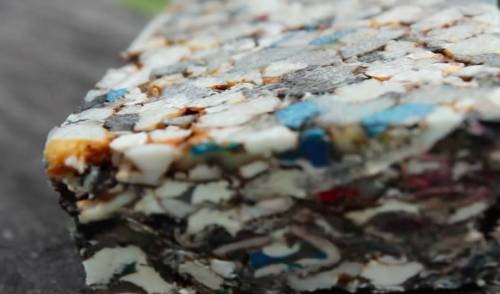
This startup is turning plastic waste into affordable housing
The company called Eco Domum, or Eco Home, is based in Puebla, Mexico. Founder Carlos Daniel González collects, sorts and melts down non-toxic plastics into a liquid, according to Unreasonable. That sludge is then put into a hydraulic press, which forms the plastic into hardened panels. It takes two tons of plastic to make one house. At scale, González’s plastic houses could be just what Mexico needs.
Follow @the-future-now



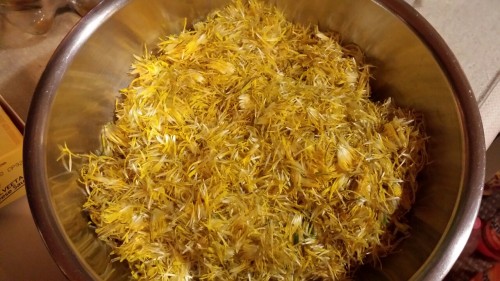
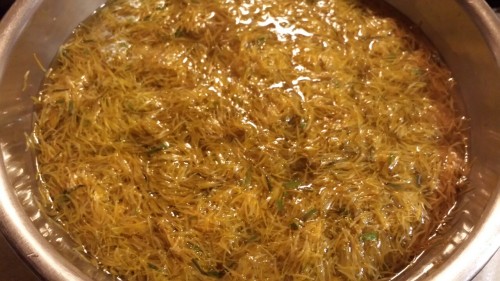
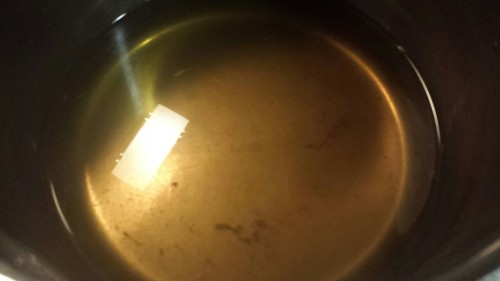

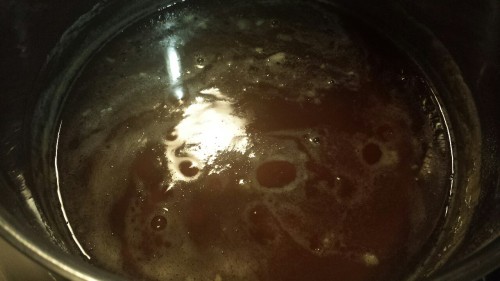
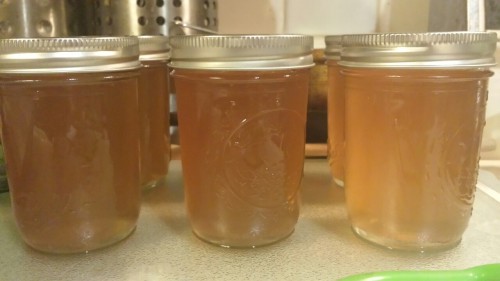
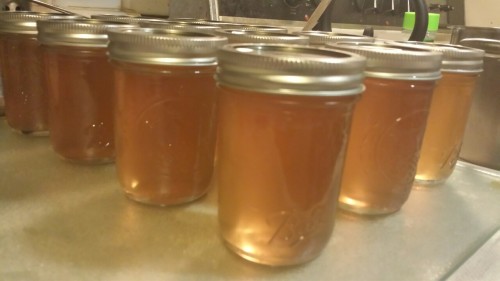
DANDELION JELLY! !! It tastes like honey! 🐝🐝🐝🐝🐝🐝🐝🐝🐝🐝🐝 been a busy bee last few days harvesting flowers, plucking petals, extracting nectar, straining and canning this delicious jelly! Very Tideaous work but it’s worth it!
3 cups dandelion tea (made from 4 cups of petals in boiled water overnight ) 4 cups of sugar 2 tbsp fresh lemon juice 6 tbsp of regular ball fruit pectin Water bath can for 10 minutes Makes 6 - ½ pints
4/20/16
solarpunk actions for minors/ppl with generally less independence ?
WOW LATE! Sorry, I’ve been without computer for a while.
Reuse! Wash and save jars. Rescue cans for planters. Before you toss something, think: is there another use for this?
Blow dandelion seeds around. Seriously, they grow anywhere and they’re useful from flower to tip.
On that note, learn what plants are edible where you are. Eat them.
Learn, research!
Find local organizations focused on conservation, food, and local sustainability. Donate money, time, stuff, whatever they need/you have.
Walk/bike places if you can/it’s safe
That’s all I have right now!! Anyone can reblog with more.

Researchers at Michigan State University have created a fully transparent solar concentrator, which could turn any window or sheet of glass (like your smartphone’s screen) into a photovoltaic solar cell. Unlike other “transparent” solar cells that we’ve reported on in the past, this one really is transparent, as you can see in the photos throughout this story. According to Richard Lunt, who led the research, the team are confident that the transparent solar panels can be efficiently deployed in a wide range of settings, from “tall buildings with lots of windows or any kind of mobile device that demands high aesthetic quality like a phone or e-reader.”
7 reasons why solarpunk is the most important speculative fiction movement in the last 20 years
It’s hopeful. Solarpunk doesn’t require an apocalypse. It’s a world in which humans haven’t destroyed ourselves and our environment, where we’ve pulled back just in time to stop the slow destruction of our planet. We’ve learned to use science wisely, for the betterment of ourselves and our planet. We’re no longer overlords. We’re caretakers. We’re gardeners.
Scientists are heroes again. And not just physicists and astronomers. Knowledge of biology and earth sciences matter, they’re the building blocks for a future on Earth. Scientific literacy isn’t just for academics – it’s part of daily life. People know how the things they use work, and if they don’t, they can access that information.
It’s diverse. Solarpunk is rooted in using the environment, so it looks different in different places. Alternative energy is best when specific to place (I imagine geothermal, wind, tidal, and hydroelectric energy sources are still used in certain places) so no overarching government system is needed. Communities can organize themselves, taking their own location and needs and history into account. Brazilian, Inuit, Egyptian, Pacific Northwest, and New Zealand solarpunk can all look very different, but be unified in resourceful, intentional, low impact living.
Individuality still matters. In a post-scarcity society, ingenuity and self-expression are not sacrificed on the altar of survival. With solar power there’s no reason not to go off grid, if that’s what you want to do. Communities can self-organize. You can find a community that suits you, or go live by yourself if that floats your boat.
There’s room for spirituality and science to coexist. Solarpunk is rooted in a deep understanding and reverence for natural processes. There’s room for spirituality there, be it pagan, Buddhist, Sufi, Transcendentalism – anything. There’s so much to explore, from nature worship to organized monotheistic religions, and how they interact with solarpunk.
It’s beautiful. The most common solarpunk aesthetic is art nouveau, but again there’s room for diversity, incorporating art styles from multiple cultures in respectful, non-appropriative ways. The most important aspect of solarpunk aesthetic is the melding of art and utility. The idea of intentional living is strong in art nouveau, but it’s not the only art movement with that philosophy.
We can make it happen. Now. Earthships. Permaculture. Aquaponics. Algae lighting. Compostable products that turn into fields of flowers. Buy Nothing organizations. Tiny, beautiful, efficient homes. Solar power cells you can see through. That’s all happening now. Solarpunk is within our grasp, at least on a personal level. I’m not saying there aren’t still big, ugly infrastructures devoted to unethical consumption, but we can start to tear them down. We can build a solarpunk world with stories and small changes. And small changes lead to big changes. That’s the real beauty of solarpunk. It’s not a post-apocalyptic power fantasy. It’s not a wistful daydream, or an elite future only for physicists. It’s something we can work towards right now. It’s tangible.
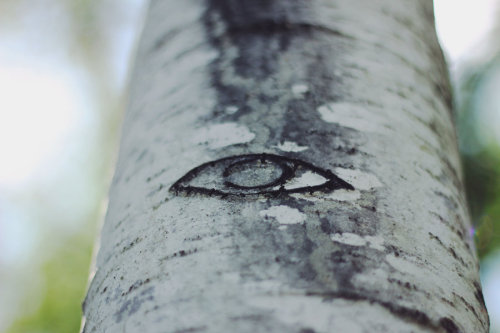
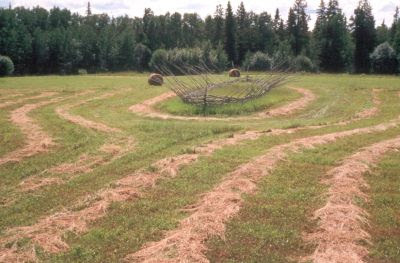
By copyrighting his property as an artwork, he has prevented oil companies from drilling on it.
Peter Von Tiesenhausen has developed artworks all over his property in northern Alberta. There’s a boat woven from sticks that is gradually being reclaimed by the land; there is a fence that he adds to each year of his life, and there are many “watching” trees, with eyes scored into their bark.
Oil interests pester him continually about drilling on his land. His repeated rebuffing of their advances lead them to move toward arbitration. They made it very clear that he only owned the top 6 inches of soil, and they had rights to anything underneath. He then, off the top of his head, threatened them that he would sue damages if they disturbed his 6 inches, for the entire property is an artwork. Any disturbance would compromise the work, and he would sue.
Immediately after that meeting, he called a lawyer (who is also an art collector) and asked if his intuitive threat would actually hold legally. The lawyer visited, saw the scope of the work on the property, and wrote a document protecting the artwork.
The oil companies have kept their distance ever since.
This is but one example of Peter’s ability to negotiate quickly on his feet, and to find solutions that defy expectations.
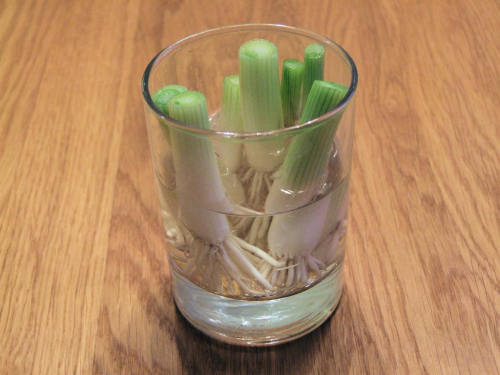
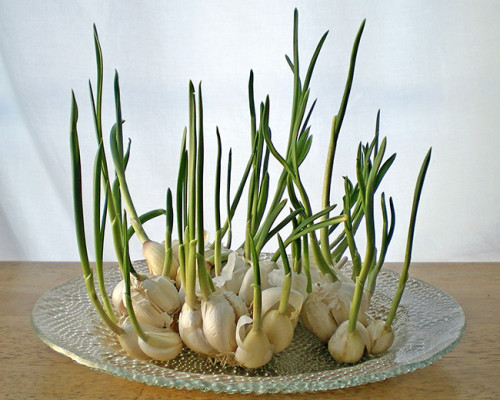
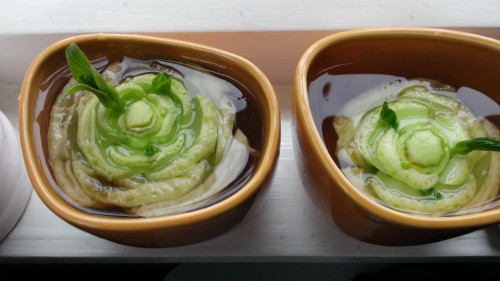
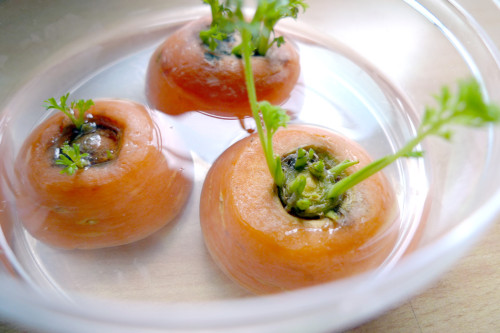
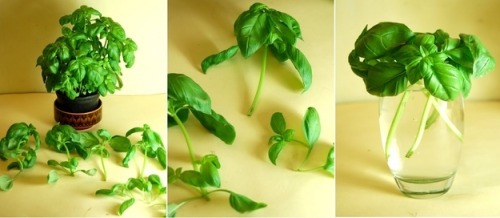

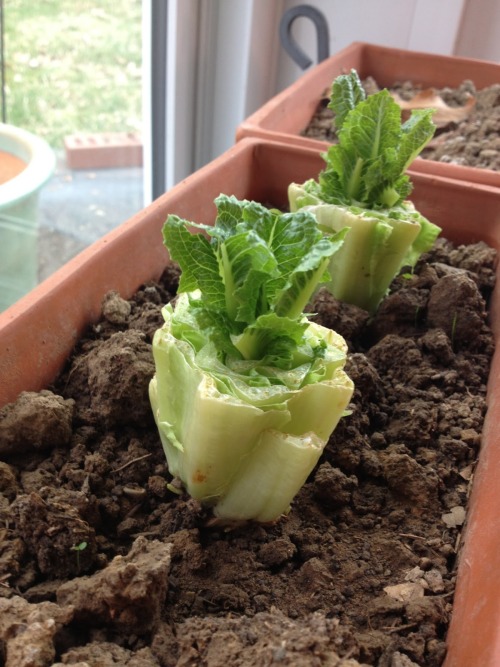
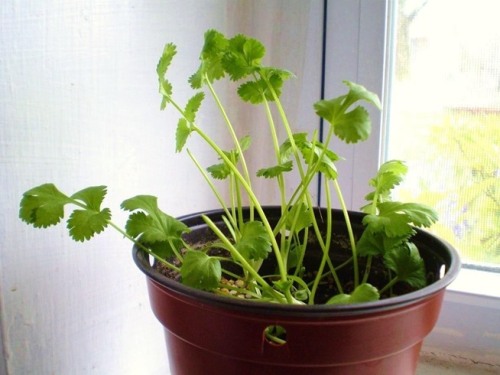
8 vegetables that you can regrow again and again.
Scallions
You can regrow scallions by leaving an inch attached to the roots and place them in a small glass with a little water in a well-lit room.
Garlic
When garlic begins to sprout, you can put them in a glass with a little water and grow garlic sprouts. The sprouts have a mild flavor than garlic and can be added to salads, pasta and other dishes.
Bok Choy
Bok choy can be regrown by placing the root end in water in a well-lit area. In 1-2 weeks , you can transplant it to a pot with soil and grow a full new head.
Carrots
Put carrot tops in a dish with a little water. Set the dish in a well-lit room or a window sill. You’ll have carrot tops to use in salads.
Basil
Put clippings from basil with 3 to 4-inch stems in a glass of water and place it in direct sunlight. When the roots are about 2 inches long, plant them in pots to and in time it will grow a full basil plant.
Celery
Cut off the base of the celery and place it in a saucer or shallow bowl of warm water in the sun. Leaves will begin to thicken and grow in the middle of the base, then transfer the celery to soil.
Romaine Lettuce
Put romaine lettuce stumps in a ½ inch of water. Re-water to keep water level at ½ inch. After a few days, roots and new leaves will appear and you can transplant it into soil.
Cilantro
The stems of cilantro will grown when placed in a glass of water. Once the roots are long enough, plant them in a pot in a well-lit room. You will have a full plant in a few months.
We See Seashores Shifting with Satellites
If you’re like us, as soon as the summer Sun is out, you start feeling – well, just beachy, sand you very much.
Lots of our favorite beaches are inside protected marine areas, which are regulated by governments to keep their ecosystems or cultural heritage intact. If you beachcomb at Cape Cod, swim in the Florida Keys or learn about Hawaiian culture at Papahānaumokuākea Marine National Monument, congrats! You’ve visited a protected marine area.

But time and tide haven’t been kind to some protected beaches.
Beaches are constantly changing, and science teams are using our 30-year record of Earth images from the NASA/USGS Landsat program to study what’s happening.
Overall, the sum total of sandy beaches has increased a bit over the last 30 years. But time and tide haven’t been as kind to our protected beaches – the team found that more than 1/3 of sandy beaches in protected marine areas have been eroding away.

Some of these areas were designated to protect vulnerable plant and animal species or connect delicate ecosystems. They are home to humpback whales and sea turtles, reefs and mangroves that protect the land from erosion and natural disasters, and species which are found in only one habitat in the world. Losing land area could upset the balance of these areas and endanger their future.

Next step: Looking for pearls of wisdom to save the beaches!
Right now, we aren’t sure which beaches are eroding due to natural processes, and which are due to humans – that’s the next step for science teams to investigate. Once we know the causes, we can start working on solutions to save the beaches.
Those 30 years of Landsat data will help scientists find answers to these questions much faster – instead of using airplanes or measuring the beaches by hand, they can use computer programs to rapidly investigate millions of satellite photos spanning many years of change.

By tracking beaches from space, scientists can help keep our summers sandy for years to come.
And that makes us as happy as clams.
Read the full story HERE.
Make sure to follow us on Tumblr for your regular dose of space: http://nasa.tumblr.com.



Yacouba Sawadogo is an exceptional man – he single-handedly managed to solve a crisis that many scientists and development organizations could not. The simple old farmer’s re-forestation and soil conservation techniques are so effective they’ve helped turn the tide in the fight against the desertification of the harsh lands in northern Burkina Faso.
Over-farming, over-grazing and over population have, over the years, resulted in heavy soil erosion and drying in this landlocked West African nation. Although national and international researchers tried to fix the grave situation, it really didn’t really make much of a difference. Until Yacouba decided to take matters into his own hands in 1980.
Yacouba’s methods were so odd that his fellow farmers ridiculed him. But when his techniques successfully regenerated the forest, they were forced to sit up and take notice. Yacouba revived an ancient African farming practice called ‘zai’, which led to forest growth and increased soil quality.
(Fact Source) Follow Ultrafacts for more facts
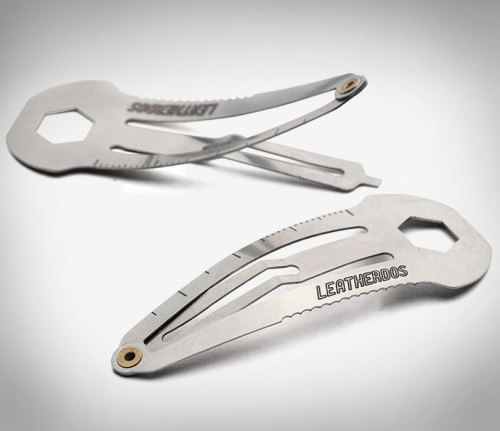
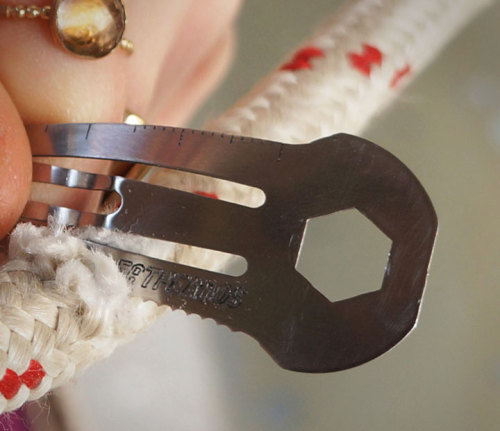
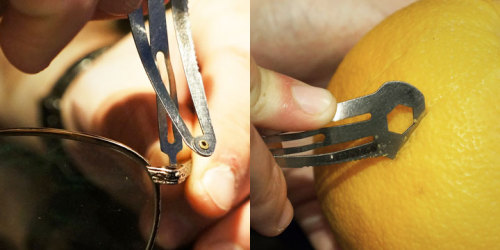
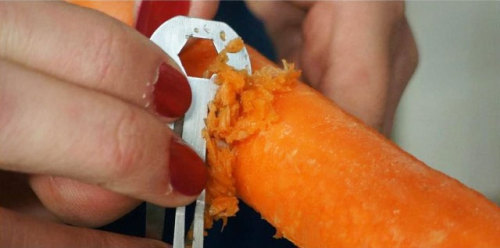
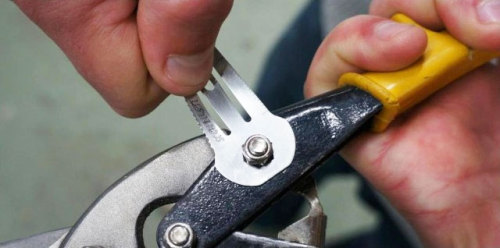
The Leatherdos is a hair clip that doubles as a multi-tool that combines 5 different tools in a tiny hair clip: screw-drivers, a wrench, a trolley coin, a ruler, and a cutting edge.
—->http://odditymall.com/leatherdos-is-a-hair-clip-multi-tool
low impact places around the world
belgium, europe

bhutan, asia

“bhutan mantains this by making the country a carbon sick and has set world records for planting the most trees per hour. they’re also aiming for zero net greenhouse gas emissions and zero-waste by 2030 as well as 100% organic food production. the bhutanese government has also formed a partnership with nissan to provide thousands of electric cars to the country” - @greenmatters on instagram
it also probably helps that tourists are very limited and it is intentionally not as easy to travel there.
chile, south america


china, asia


“china recently announced they would spend more than $360 billion on renewable energy through 2020″ - @greenmatters on instagram, june 29, 2017
colombia, south america

“colombia is the first country in latin america, and the third country in the world, to pledge to produce deforestation-free coca. the pledge is part of the cocoa and forest initiative, which ghan and cote d’ivoire have also signed.” - @greenmatters on instagram
costa rica, central america



“costa rica’s renewable energy comes from hydropower, geothermal, wind, and solar” - @greenmatters on instagram
egypt, africa

england, europe


ethiopia, africa

“energy produced by the new geothermal power plants will be used locally and exported to surrounding countries in africa” - @greenmatters on instagram
france, europe

“instead of throwing away or destroying unsold clothing, france may pass legislation to make clothing companies donate or repurpose items in an eco-friendly way.” - @greenmatters on instagram
INSTEAD, they should make efforts to not overproduce. donating clothes should be thoughtful. many times, when clothes are donated abroad to “developing” countries, it destroys their local economy and opportunities for local clothing stores to sell their clothes cheaply enough. it is good to think of ways to responsibly get rid of “waste” and excess we do create, but the first step should be to stop the excess from being produced in the first place. #preventative measures.




india, asia


ireland, europe

“the irish state investment fund holds more than 300 euros in fossil fuel investments in 150 companies. the bill defines a fossil fuel company as a compnay that derives 20% or more of its revenue from exploration, extraction, or refinement of fossil fuels. the bill also allows investment in irish fossil fuel companies if this funds their move away from fossil fuels” - @greenmatters on instagram
germany, europe

new zealand


“new zealand hopes to transition to 100% renewable energy by 2035″ - @greenmatters on instagram
palau

“the pledge is tamped on every visitor’s passport and must be signed before entry into the 13th smallest country in the world. palau’s hoping the pledge will help guests understand the vital role they play in protecting palau for future generations” - @greenmatters on instagram
peru, south america

scotland, europe


“scotland has hit its 2020 emission target five years early and has gone from 10% to 60% of its electricity consumption from clean sources over the past 15 years” - @greenmatters on instagram
sweden, europe

“so far, sweden is on track to meet their 2030 goals nine years early, thanks to a surge in wind power installations” - @greenmatters on instagram
united states of america, north america

maui, hawaii, usa, north america

san francisco, california, usa, north america

nebraska, usa (winnebago tribe), north america

“the tribe started to transition towards renewable energy over a decade ago and now has 400 kW of installed solar panels. by switching to solar power, their saving roughly $46,000 annually on electricity” - @greenmatters on instagram
minneapolis, michigan, usa, north america

“minneapolis, minnesota is the next city in the united states to commit to a goal of running on 100% renewable energy. they plan to have all their city facilities running on clean power by 2022 and the entire city by 2030. the [sierra club] notes that minneapolis is now the 65th city in the country placing folly renewable goals” - @greenmatters on instagram
new york, usa, north america

“[governor cuomo] says the offshore wind farm will be critical to help new york state reach their goal of reducing greenhouse gases by 80% by 2050. in total, the wind development will generate 2.4 gigawatts of clean power.” - @greenmatters on instagram

“the money will fund 26 large-scale projects that will help new york reach its goal of using 50% renewable energy by 2030″ - @greenmatters on instagram
denton, texas, usa, north america

“the city of denton (pop. 130k) will install enough solar and wind to power everything by 2020. currently, georgetown, tx (30 miles north of austin) has the title of the largest community (60k) that relies on renewable energy in the u.s.” - @greenmatters on instagram
taiwan, republic of china

“to prepare their citizens for the plastic ban, the taiwanese government will be adding additional charges to plastic straws, utensils, cups and containers over the next several years. additionally, the taiwanese government will be launching a number of marine clean-up programs. currently, the average taiwan citizen uses 700 plastic bags per year” - @greenmatters on instagram
wales, europe

“the welsh government has spent roughly $10.4M to improve recycling services through their collaborative change programme, which gives local authorities money to improve recycling programs in the way they think best. by working closely with citizens, who are thrilled by the zero-waste goal, wales could show the world that a country can accomplish extraordinary things when the will of the people is supported by the government” - @greenmatters on instagram
copyright infringement is not intended, simply trying to share credited work that will help make the world a better place to live a quality life
DIY Laundry Detergent
GUYS, THIS WORKED. YOU DON’T EVEN KNOW HOW EXCITED I AM.
My first homesteading project was a roaring success! I know this probably means I’m doomed for failure in the future (ever the optimist, I am), but YAY for now.
!!
Okay, done squealing. Here’s what happened:
I used this recipe from Budget101.com. I had several detergent recipes pinned, but I’m partial to a liquid/non-powder detergent. Especially when said liquid is concentrated (you only need to use one tablespoon per load here).
I did this on Sunday as a weekend project with my mom, and was 90% convinced I was going to have a nasty, sudsy mess all over her stove. But instead, we made THESE:
Aren’t they gorgeous?
But I’m getting ahead of myself again.
Alright.
Ready?
Here’s what you need:
1 cup Borax
1 cup Arm & Hammer Washing Soda
1 bar Fels Naptha
4 cups water
2 1-quart Mason jars
Total cost for 128 loads of laundry: $1.76
Grate the bar of Fels Naptha using a cheese grater (yes, really). It’s super soft, and shouldn’t be too difficult. It will take about five or ten minutes, depending on your pressure and attention span.
Put the 4 cups of water in a LARGE pot (big enough to take on all the ingredients, plus room for a bit of foam) and set it to high, waiting for a boil.
Measure out the Borax and Washing Soda, mix together well in a bowl.
Once the water begins to boil, add the grated Fels Naptha gently, and reduce the heat to medium. Stir constantly until the soap is completely dissolved, about 10-15 minutes. Be careful not to let this boil over, or you will end up with the sudsy mess I was anticipating. This is the extent of foam you should see:
Once the Fels Naptha has melted, remove the pot from the heat and add the blended Borax and Washing Soda. It’s essential you stir constantly here as well, lest you end up with an icky, grainy detergent that could leave residue on your clothes. Stir for about 5 minutes, or until you no longer feel graininess on the bottom of your pot.
Next, pour the detergent equally into your two Mason jars. Add water until the liquid reaches the “shoulders” of the jar (the rounded part near the top). There should be about 1.5 - 2 inches of air space at the top of the jar.
Put the lids on your jars and set them upside down. Leave them like this for 4-5 hours, so they can do their separation thang. Have a Netflix marathon, make a four-course dinner, go for a run, whatever. Just DON’T TOUCH THE JARS until those 4-5 hours are up!
When you come back, they’ll look like this:
Kinda nasty, eh? Just wait – your detergent is about to become oh-so-beautiful.
Grab a mixing bowl and your hand mixer, and empty out the contents of both jars into the bowl. Make sure you scrape the sides of the jar to get all the detergent out. Now whip it! Whip it good!
…until your detergent is light and fluffy.
Ta-da! Transfer back into your (rinsed and dried) jars, and you’re done!
To use, simply add one tablespoon of detergent per load of laundry. Add it directly in with the clothes, no matter what your machine says. Take a spoonful, and put it under the running water, allowing the detergent to run off the spoon onto your dirty clothes. Close the machine up and you’re done!
Notes: Since the soaps are already dissolved in this detergent, it won’t leave any residue on your clothes like other DIY detergents can. Also, at $1.76 for 128 loads of laundry, this one is a real money saver!
Happy Laundering,
Becca, The Semi-Homesteader
How much longer until the utopic Solarpunk future where Capitalism is dead and we all live in ecologically sustainable high-tech forest cities? Asking for a friend.
Actually you know what. Just don’t mow. Get rid of your lawnmower. Turn your whole yard into a wildflower field or an edible garden. Lawns are the invention of the upper class to show wealth through wasted plots of grass that is meticulously tended for no reason other than to be grass. It’s literally an empty plot of land they kept because they had so much money they didn’t need it to grow food. Not using a yard as just a yard is an act of rebellion.
One of the main industries still supporting lawns is chemical pest control companies, and they’re also responsible for the insecticides that crashed the bird populations in the 40s and 50s as well as a lot of what’s killing bees and butterflies now. The herbicides they produce specifically targets “bad” plants like dandelions, buttercups, and clovers, which are plants bees rely on for early spring feeding. Grass is just grass; it would be great for feeding small mammals if people would let it grow more than three inches, but they won’t.
So, yeah. Kill lawnmower culture. Plant some native flowers. Grow some vegetables and fruit trees. Put out bird feeders and bee sugar spots and homes for both. Be kind to bugs and birds and rabbits and opossums and whoever else might wander by. Make your neighborhood a lot more beautiful.
Hey solarpunk community! In light of several posts that have been going around, I was thinking it would be worthwhile to talk about the real, physical things we can do to make this world a more solarpunk place. Because speculation and aesthetics and thinkpieces are awesome, but a movement isn’t a movement without real action behind it. So what are things we can all do to make the present closer to our solarpunk future?
Can't afford to buy things for your garden?
*Re-posting, with new information
A store-bought bag of topsoil, a roll of landscaping fabric, or a bag of cedar chips doesn’t go very far if you have a large garden or a very limited budget. Here are some ways to create the materials you need for a beautiful, organic, productive garden, by both re-directing household waste, and foraging in your local area. I use a lot of these tricks in my garden to make it almost completely free for me to continue growing new things, and expanding the workable area every year!
For soil
Save your food scraps to create a rich compost for growing veggies and amending your soil. There are numerous options for every size of dwelling and yard. Small space solutions such as Bokashi and vermicompost work indoors and don’t produce bad smells, so you can keep them underneath the sink.Worm towers, compost heaps, and outdoor compost bins are a great solution if you have more space. The more you add, the more rich, nutritious material you can make for your garden. I like composting because it means I don’t have gross smelly garbage bags to deal with, because food waste is diverted. It seems like a lot of work at first, but it actually saves time, money, and transportation.
Seaweed or kelp is one of the best things for your garden, with over 70 essential nutrients, and acting as a weed barrier and a moisture-retentive mulch. I collect seaweed nearby on the beach with my bike trailer, or, when I go for a walk I bring a little home with me each time. It’s an absolute miracle for your soil.

Worm tower
Fertiliser
There are three things that are essential for plant growth. These are nitrogen for leaves and vegetation (N), phosphorus for roots and shoots (P), and potassium for water movement, flowering, and fruiting (K). Commercial fertilisers will give the relative concentrations of each of these compounds with and “NPK” rating. Plants like tomatoes also need calcium to produce healthy fruit. You can create amendments for your garden and soil at home so that you do not have to purchase fertiliser.
For nitrogen
Grass clippings contain 4% nitrogen, 1% phosphorus, and 2% potassium (NPK = 4-1-2).
Human urine contains 12% nitrogen, and it’s sterile. Dilute before adding directly to plants.
Legumes such as beans, clover, peanuts, and alfalfa fix inorganic nitrogen into the soil with mycorrhizal organisms and nodules on their root systems. Plant these crops every few years in rotation with others to renew the soil organically.
For phosphorus
Human urine is also a great source of phosphorous and trace amounts of potassium.
Ground up bones or shells add a slow-release phosphorous to the soil
Had a baby recently? Bury the placenta in the garden.
For potassium
Hardwood ashes
Composted banana peels
For calcium
Break down all of your eggshells, or seashells you have found, in a plastic bucket, using vinegar. This creates a soluble calcium solution you can add to a watering can.
Soil Acidity/Alkalinity
Many plants are particular about what the soil pH should be.
To make soil more acidic: add oak leaves, pine needles, leaf mulch, urine, coffee grounds or sphagnum.
To make soil more alkaline: add wood ash, shell, or bone.
Mulch
Mulch is decomposing organic matter that adds nutrition to the soil, while simultaneously keeping out weed growth and retaining moisture. It also attracts worms, fungi and other beneficial creatures to your soil. Free sources of mulch include:
Leaves
Garden waste
Grass clippings
Straw (often straw bales are given away after being used for decoration in the fall. You can also plant vegetables directly in straw bales using a technique called straw bale gardening).
Wood chips (if you can borrow a wood chipper after you’ve collected some wood you can have attractive wood mulch for free)

Straw bale garden
Landscaping fabric
When mulch isn’t enough to keep the weeds down, many people opt for landscaping fabric. It can be quite expensive and inorganic-looking. Free solutions that both attract worms and can be replaced in small segments as they break down include:
Newspaper*
Cardboard*
Egg cartons*
Printer paper, looseleaf, etc. in thick layers*
*try to make sure you are using paper that has vegetable-based dyes, so you aren’t leeching toxins into the soil.
Soil density/drainage
If your soil is compacted and you have plants that require low levels of water, or excellent drainage, add sand. I don’t recommend stealing it from the beach, but ask around and you’d be surprised at how easy it is to get for free. Sawdust also improves drainage. Adding organic matter and mulch encourages worms, who also till and aerate compacted soil.
If the area still needs drainage, dig a hole and fill it with bricks or rocks to create a “dry well”
For drainage in pots, add crushed bricks, terra cotta pot fragments, packing peanuts, small stones, marbles, orsand to the bottom under the soil layer. I find these in construction sites, on craigslist, or at flea markets.
Pots and growing containers
If you have space, raised beds are a great no-dig way to establish growing space. If you are pressed for space (like working on a balcony) there are many cheap or free options for container gardens.
Creating raised beds allows you to build up the soil without digging. Free ways to do this include using rocks or lumber (like my DIY “lasagna garden” made with the sheet composting technique), using the “wattle“ method with sticks and posts you have found, using discarded straw bales, old bricks,paving stones, cinder blocks or really anything else you have lying around.
Hugelkutur raised beds, which fix carbon and provide drainage, can be made by stacking sticks and untreated wood, and then piling soil or compost over it. (Thanks milos-garden)
Rubber tire gardens retain heat in the night and allow for great drainage. They can also be painted in fun ways.
Herb spirals (here is mine: 1, 2, 3) can be built with stones, bricks, and other found materials.
I often use old cooking pots, barbecues, teapots, or other found objects as planters.
Making wooden planters is easy, and scrap or salvaged wood is also easy to come by. I’m not a fan of using wooden pallets for DIY projects, but they are also a free source of lumber for things like planters.
If you can track down peat moss, cement, and vermiculite, you can make an easy Hypertufa planter in whatever shape you would like, provided you have a form in which it can dry.
I’ve made hanging gardens out of soda cans.
You can build a self-watering container with a 2L pop bottle.
Start seeds in eggshells
Make biodegradable pots out of newspapers.
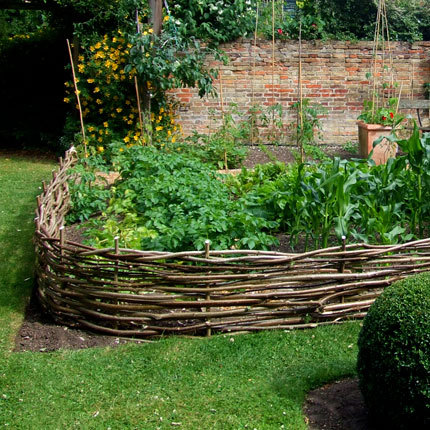
Wattle raised beds

Rubber tire gardens

Hugelkultur

An herb spiral
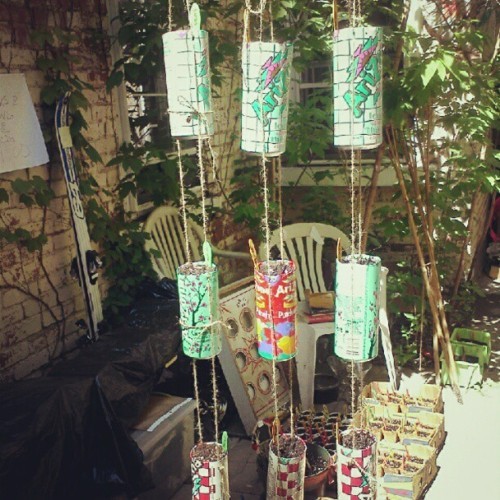
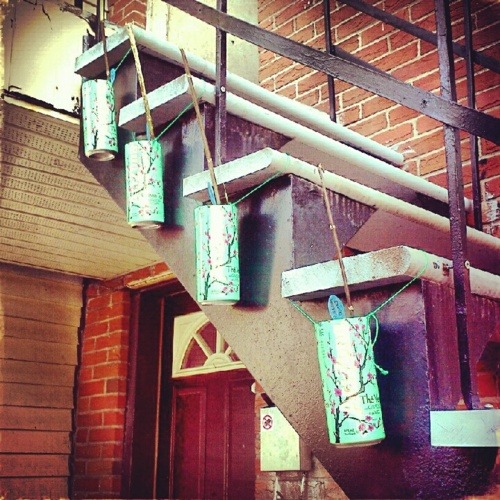
Hanging gardens in cans (2)
Trellises and supports
Many plants need external support, such as stakes of trellises, to thrive.
Rebar can almost always be salvaged cheaply or free and makes a great trellis, arch, or purgola
Build trellises and supports out of the pliable young stems of plants like willow
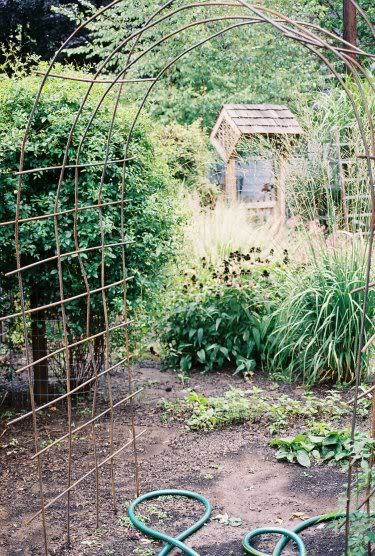
Rebar trellis/arch

Living willow arch/trellis
Paving
Paving often requires a foundation of sand or another stable and well-drained substrate, and a covering of stones, bricks, or other weatherproof elements. Slowly collect stones over time, or free paving stone fragments to create a mosaic-type walkway. Often people give these things away on craigslist. I made a patio and fireplace out of free salvaged bricks, for example.

Salvaged garden walkway
Greenhouses and cold frames
Here is a gallery of greenhouses made out of salvaged windows and doors
A cold frame is easy to make with salvaged lumber, and plastic sheeting.
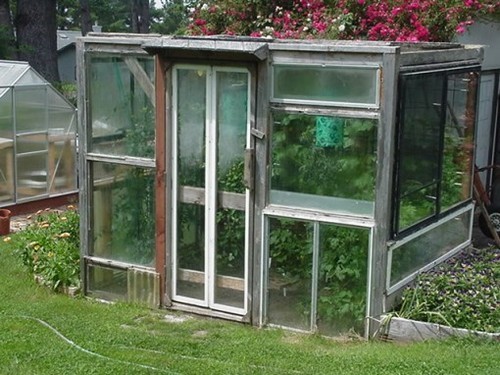
Window greenhouse
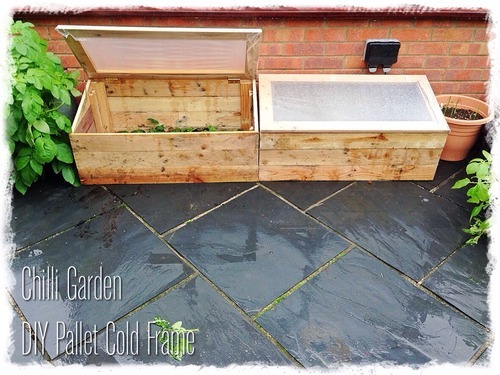
Palet cold-frame
Seeds and plants
Swap seeds with other gardeners
If you see a plant you like at someone’s house, ask for seeds or cuttings
Save seeds every year and build a library of options. Here is a great guide to seed saving.
Save seeds from foods you like from the grocery store: consider growing peanuts, ginger, garlic, peppers, or a walnut tree: all of these and more can be planted from store-bought produce.
Learn to take cuttings. There is a tonne of info on the web about basic cutting propagation, layering, (like I do with rhododendrons) air layering, and numerous other techniques to take clones of plants you like. This saves going to a nursery and shelling out big bucks for all the variety you want.
For cuttings, willow tea and honey are great rooting hormones/antiseptics/anti-fungal agents, which can save you $40 if you were thinking of buying commercial rooting hormone.
You can root cuttings in a potato! (See my methods for rooting “borrowed” plants here)
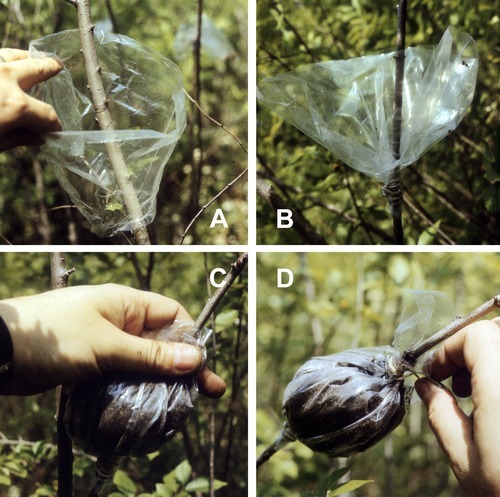
Air layering
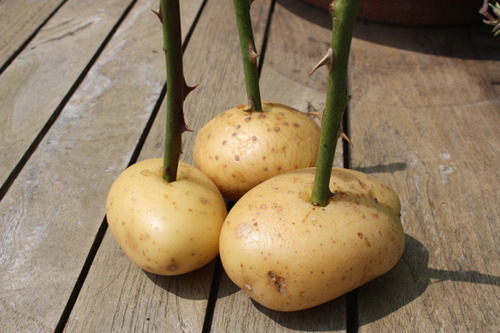
Rooting cuttings in potatoes
—-
I hope this helps you build your garden outside of the usual capitalist channels! It can be a cheap or free hobby if you are willing to think outside the box, and maybe put up with things that don’t look as clean or crisp as a hardware store catalogue. If you have any further ideas, please add them! The more information the better.
Speaking about alternative ways of growing things, have you seen the bottle tower gardens invented by Willem Van Cotthem? His youtube videos are a bit amateurish but the plant results look amazing. I prefer straight up recycling plastic bottles but that IS a neat upcycling idea and it's a water-efficient and space-efficent way of gardening 8D
Oh nice, I hadn’t seen these before, but they look ingenious!

A great way to repurpose waste plastic too, especially as not everywhere has plastic recycling facilities. The water efficient part is appealing too. Solutions like this would be helpful for people living in more arid climates!
Here’s a quick DIY guide for anyone who’s interested.

Day 1612 - We use Imperfect Produce for most of our fruits and veggies at the moment. I’ve always loved that most of their produce comes loose in the box and I appreciate that they recently started prominently labeling the items that would come in plastic.
fucked up how cooking and baking from scratch is viewed as a luxury…..like baking a loaf of bread or whatever is seen as something that only people with money/time can do. I’m not sure why capitalism decided to sell us the idea that we can’t make our own damn food bc it’s a special expensive thing that’s exclusive to wealthy retirees but it’s stupid as hell and it makes me angry
i think one of the things i want to start learning in 2018 is how to make clothes. how do you start doing that?
sewing is one of those skills everyone with the ability should know IMO. i’ve known too many people who just throw out perfectly servicable clothing and bedding because of tears or buttons that have fallen off and these can be fixed at home. sewing’s not hard either.

Repair Cafés
Repair Cafés are free meeting places and they’re all about repairing things (together). In the place where a Repair Café is located, you’ll find tools and materials to help you make any repairs you need. On clothes, furniture, electrical appliances, bicycles, crockery, appliances, toys, et cetera. You’ll also find expert volunteers, with repair skills in all kinds of fields.
Visitors bring their broken items from home. Together with the specialists they start making their repairs in the Repair Café. It’s an ongoing learning process. If you have nothing to repair, you can enjoy a cup of tea or coffee. Or you can lend a hand with someone else’s repair job. You can also get inspired at the reading table – by leafing through books on repairs and DIY.
There are over 1.500 Repair Cafés worldwide. Visit one in your area or start one yourself!
Read more…
when the capitalists die out either thru global warming or revolution will we be able to start homegrown internet


A Practical Guide to Herbology
Lesson One: Medicinal Teas
When I was first starting out with herbology, I was living in a small village in Croatia with a total population of less than 100 people. We depended on homemade teas, salves and medicines to heal us since the nearest hospital was two hours away. We treated ourselves with the power of herbs, gifted to us by the Earth.
These days, we can purchase all the tools we need to grow both common and exotic plants. Dried herbs are also another good option, especially for those that cannot grow their own. And with these tools, we can craft our own medicines.
For the first lesson, I’m going to focus on something simple: the art of crafting medicinal tea.

Creating Tea Blends
When starting out with creating medicinal teas, it’s important to understand how each ingredient interacts with our bodies. Be sure that you’re not allergic to any of your herbs and that they won’t interact poorly with any prescribed medications that you’re on. For example, those who are diabetic should not take angelica root; folks who are allergic to ragweed should avoid chamomile.
Here’s a list of common herbs and their functions for the purposes of crafting medicinal teas:
Angelica Root: Soothes colds and flu, reduces phlegm and fever. (Do not use if you are diabetic)
Basil: Eases headaches, indigestion, muscle spasms, insomnia; reduces stress and tension
Blackberry Leaves or Roots: Reduces diarrhea
Catnip: Soothes teething pain, colic, diarrhea, indigestion, anxiety, insomnia. (May cause drowsiness. Avoid if on Lithium or sedatives)
Calendula (marigold): Reduces fevers, soothes indigestion, gastrointestinal cramps, flu; antiseptic. (May cause drowsiness. Avoid if on sedatives)
Cayenne Pepper: Soothes coughs, colds, arthritis (topical), nerve pain, fever, flu; expectorant. (Avoid taking with medications that contain Theophylline).
Chamomile: Reduces insomnia, anxiety, stress, fever, indigestion; aids with sleep and pain relief. (May decrease effectiveness of birth control pills and some cancer medications, may increase the effects of warfarin; avoid if you are taking medications for your liver)
Cinnamon Bark: Soothes sore throats and coughs; anti-inflammatory (Avoid taking with diabetes medications)
Dandelion Root: Detoxifying, aids digestion, relieves constipation, laxative. (Avoid if on antibiotics, lithium or water pills)
Dandelion Leaf: Mild diuretic, potassium-rich (Avoid if on medication for liver)
Elderberries: Wards off colds and flu
Ginger: Eases morning sickness, nausea, colic, indigestion, diarrhea, fever, sore throats. (Avoid taking with medications that slow blood clotting)
Ginkgo: Relieves anxiety, vertigo, tinnitus; improves circulation, helps concentration; helps PMS. (Avoid taking with ibuprofen or with medications that slow blood clotting; numerous medications have interactions with ginkgo so speak to your specialist before use)
Ginseng: Aphrodisiac, mild stimulant, boosts immune system. (Do not take with medications that slow blood clotting, and avoid taking with diabetes medications or with MAO inhibitors)
Goldenrod: Relieves gout and cramps
Lavender: Reduces anxiety, headaches, tension, stress, indigestion, IBS; antibacterial; antiseptic; disinfectant (May cause drowsiness; avoid if on sedatives)
Lemon balm: Relieves anxiety, cold sores, colic, insomnia, restlessness, indigestion; boosts memory (May cause drowsiness, avoid taking with sedatives)
Nettle: Reduces hay fever and arthritis; diuretic. (Avoid taking with diabetes medications, medications for high BP, sedatives, medications that slow blood clotting, and lithium)
Peppermint: Relieves nausea, anxiety, indigestion, IBS, colic, diarrhea, fever, coughs, colds; anesthetic (Avoid if you have acid-reflux disease; avoid taking with cyclosporine; avoid if on liver medications)
Pine Needles: Expectorant; antiseptic; relieves coughs, colds, fever and congestion
Rosemary: Improves focus, memory, concentration, BP, circulation; antiseptic; antidepressant; eases indigestion
Thyme: Antibacterial, antiseptic, eases coughs and colds, expectorant (Do not take with medications that slow blood clotting)

Recipes
For those starting out, here are a few recipes for common ailments. As you start making your own teas, you’ll learn which blends of herbs work best for your body. Keep track of which ingredients and combinations are successful - with each steep, you get closer and closer to crafting your perfect personalized medicine cabinet.
Anxiety Relief - ½ tsp chamomile - ½ tsp lemon balm Cold Relief - ½ tsp elderberry flower - ½ tsp thyme Mood Booster - ½ tsp lavender - ½ tsp catnip - ½ tsp rosemary Cramp Relief - ½ tsp basil - ½ tsp calendula (marigold) - ½ tsp goldenrod Indigestion Relief - ½ tsp ginger - ½ tsp lemon balm - ½ tsp peppermint Expectorant - ½ tsp pine needles - ½ tsp nettle leaf - ½ tsp angelica root Insomnia - ½ tsp chamomile - ½ tsp catnip - ½ tsp lavender Sore Throat Relief - ½ tsp cinnamon (or half a stick) - ½ tsp ginger - 1 tbsp honey Fever Break - ¼ tsp cayenne pepper - ½ tsp angelica root Flu Relief - ½ tsp calendula (marigold) - ½ tsp lemon balm
—————————————————————————–
Photographs are under the Creative Commons License. Content is from my grimoire and is embedded with information from a variety of sources over the years.
Updated 7 March 2018 with relevant warnings and to be consistent with other posts in this series.
Warnings: All plant material should be sourced appropriately and responsibly for your own safety and well-being. Be certain that you are purchasing food-grade ingredients from a reliable retailer or supplier. Along these lines, not all dried herbs are meant for consumption so please be on the lookout for “external use only” labels - you do not want those products for this.
Do your own research regarding medicinal plants and usage, especially if you are sensitive or have allergies of any kind. If you are on medication(s), consult a doctor before use.
Finally, medicinal teas are a health supplement and not a substitution for professional medical and psychiatric aid. If you are experiencing any prolonged health and/or mental health issues, SEE A DOCTOR.
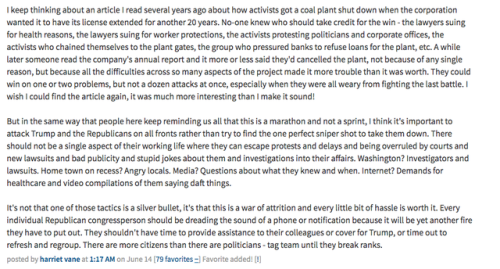
I keep thinking about an article I read several years ago about how activists got a coal plant shut down when the corporation wanted it to have its license extended for another 20 years. No-one knew who should take credit for the win - the lawyers suing for health reasons, the lawyers suing for worker protections, the activists protesting politicians and corporate offices, the activists who chained themselves to the plant gates, the group who pressured banks to refuse loans for the plant, etc. A while later someone read the company’s annual report and it more or less said they’d cancelled the plant, not because of any single reason, but because all the difficulties across so many aspects of the project made it more trouble than it was worth. They could win on one or two problems, but not a dozen attacks at once, especially when they were all weary from fighting the last battle. I wish I could find the article again, it was much more interesting than I make it sound! But in the same way that people here keep reminding us all that this is a marathon and not a sprint, I think it’s important to attack Trump and the Republicans on all fronts rather than try to find the one perfect sniper shot to take them down. There should not be a single aspect of their working life where they can escape protests and delays and being overruled by courts and new lawsuits and bad publicity and stupid jokes about them and investigations into their affairs. Washington? Investigators and lawsuits. Home town on recess? Angry locals. Media? Questions about what they knew and when. Internet? Demands for healthcare and video compilations of them saying daft things. It’s not that one of those tactics is a silver bullet, it’s that this is a war of attrition and every little bit of hassle is worth it. Every individual Republican congressperson should be dreading the sound of a phone or notification because it will be yet another fire they have to put out. They shouldn’t have time to provide assistance to their colleagues or cover for Trump, or time out to refresh and regroup. There are more citizens than there are politicians - tag team until they break ranks.
This Metafilter comment is good and smart and makes me feel better about the work ahead of us.
Can I watch a great film knowing the actresses in it were terrorized and mistreated the entire time? Can I watch a football game knowing that the players are getting brain injuries right before my eyes? Can I listen to my favorite albums anymore knowing that the singers were all beating their wives in between studio sessions? Can I eat at the new fancy taco place knowing when the building that used to be there got bulldozed eight families got kicked out of their homes so they could be replaced with condos and a chain restaurant? Can I wear the affordable clothes I bought downtown that were probably assembled in a sweatshop with child labor? Can I eat quinoa? Can I eat this burger? Can I drink this bottled water? Can I buy a car and drive to work because I’m sick of taking an hour each way on the subway? Whose bones do I stand on? Whose bones am I standing on right now?



Printed Solar Bio-Batteries
Led by biotechnologist Marin Sawa, a group of researchers at Imperial College London have devised a way to print solar cells onto paper. They use an inkjet printer to place a conductive layer of carbon nanotubes and a layer of living cyanobacteria to create devices which can capture and store solar energy.
In their proof-of-concept experiment, the cyanobacteria survived the printing process and were able to produce energy from photosynthesis. The trial panel was palm sized and gave enough energy to power a small LED light. Even better, being little more than paper, carbon, and bacteria, the bio-cells are fully biodegradable.
The work is part of an emerging field of science called microbial biophotovoltaics (presumably related to the biovoltaics I’ve mentioned here before) which uses algae and cyanobacteria to generate energy. The energy generated may be small, but it’s also cheap and easy to manufacture, and the microbes can continue generating electricity after dark, using compounds made during daylight.
The bio-batteries aren’t intended to replace standard photovoltaics for large scale energy production. Instead, they can provide an inexpensive and renewable source of energy for specific uses, such as air quality monitors and healthcare applications.
“Imagine a paper-based, disposable environmental sensor disguised as wallpaper, which could monitor air quality in the home. When it has done its job it could be removed and left to biodegrade in the garden without any impact on the environment.” – Marin Sawa
Sawa et al (2017) – open access
